Photo

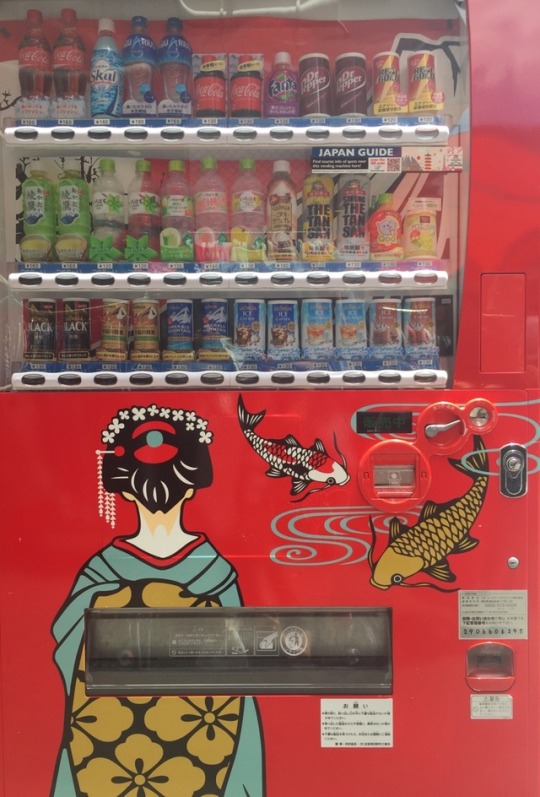


My observation is that after one hundred and twenty years since opening of the country, present day Japan is split between two opposite poles of ambiguity.
~Kenzaboru Oe (Nobel Prize author)
Japan is a land of contrasts. Japan also values ambiguity. Japan takes neither one side nor the other while simultaneously being both. There’s a part of Japan that searches for individuality and independence often seen in the younger generation; while, another older part of them continues to teach group harmony and conformity. Each individual person falls on different sides of the spectrum of two extremes, most often standing closer to the middle. From what I’ve observed during my stay, they want to keep both. A rapidly industrializing, modernizing country wants to respect nature and preserve traditions. Rather than tear down what they have, they continue to restore and maintain. Polar opposites that want to harmonize and complement rather than contradict one another.
They will seek individuality in Takeshita Dori, but also look for their group of common interest. Traditional Taiko drums have been reinvented for a wide audience through arcade games. Calligraphy will stay the same, but their words will change. There will be lily ponds and shrines next to skyscrapers and highways. Somehow, it all works.
However, ambiguity is double-edged. There might be harmony among the group but torture for the individual. Silence can lead to misunderstandings. How will they advocate for themselves through the implied or words in between? Will they continue to live side by side, or will it tear itself apart with inaction and silence? This is something I’ve observed: they will continue to seek balance.
0 notes
Photo
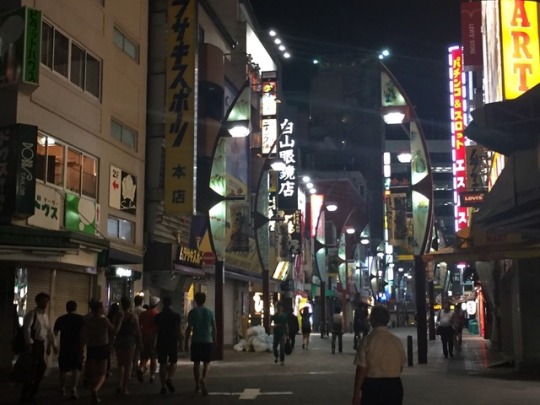
Japan has become arguably the world’s ugliest country.
~Alex Kerr
I looked for the context of this quote. Just like anyone else, I didn’t quite understand where he was coming from. Did he mean politically because Japan has one of the most difficult acceptance procedures for asylum seeking refugees? Does the ugliness come from their culture of silence for bullying or sexism? The Yakuza’s Filipino sex-trafficking?
Alex Kerr meant his quote in a geographical and environmental sense. In which, I would also agree. The country rapidly industrialized in the last half-century by leveling hills, changing river patterns, building highways and apartment complexes. Tokyo 2020 Olympics is coming very soon, and they need to accommodate for the droves of people who will visit (and then leave the city a wreckage). On a national level, is Japan doing what it can to preserve the environment? I never really thought about it due to how the areas I viewed are the well-kept tourist hangouts.
A comment made during one of our last dinners in Ueno made me take a step back from all the excitement of being in Japan. It’s hard to live in Japan. Whether economically or culturally, it is difficult. Maybe it’s not a good idea to drop everything, learn Japanese, and go live in Japan (like some of us joked about during the trip).
Japan is rated the 3rd loneliest country in the world. Loneliness is determined by the number of individuals living alone. Some of the factors that affect this are cultural closeness with one another, evidenced by the low birth rates. Or it could be growing independence of the female workforce living on their own rather than starting families. Many elderly people are also living alone. Each situation is very individual, but doesn’t take away from the growing social and cultural concerns.
This is a very rose-tinted trip. I learned a lot about myself interacting as a tourist in a setting that I’m not all too familiar. It was an overall fantastic journey, one that I’ve been privileged to experience. But did we ever take a step back and see that maybe Japan isn’t the Disneyland we make it out to be? At the beginning, we talked about the 2011 Tohoku earthquake and tsunami that wrecked the East coast of Japan. Many families lost their loved ones and their livelihood. Towns were destroyed by the waves. It’s not all Akihabara or Harajuku, although I wasn’t immune to seeing it that way at times. But maybe we can delve even deeper into some of Japan’s history and reflect on its current issues.
Here are some articles I read to supplement this reflection.
Japan’s refugee acceptance rate:
https://www.google.com/amp/s/amp.businessinsider.com/why-japan-accepts-so-few-refugees-2018-4
Japan is the 3rd loneliest country:
https://www.immigroup.com/news/top-10-loneliest-countries-world
0 notes
Photo







It is impossible to remain indifferent to Japanese culture. It is a different civilization where all you learnt is forgotten. It is a great intellectual challenge and a gorgeous sensual experience.
~Alain Ducasse
Evening of the 8th day, June 8, 2018.
It has been the intellectual challenge of entering a foreign country. I’ve been learning how to weave through a crowd while exclusively keeping to the left. I’ve been picking up bits and pieces of a language that is difficult to learn. I tried on traditional clothing and understood the pain of wooden sandals. I drummed on Taiko drums both traditional and arcade and tried my hand at calligraphy. They are very particular about how they do things, and hopefully there will be signs to tell you how. Miraculously they will be in English. There’s so much to know that you have to immerse yourself into it and let things happen to you rather than force your way through them.
Entering the Todai-ji, I had never felt so small. Prickling down my spine were nerves of fear and awe. There’s been many experiences where I’ve been awed by the sheer history of the places we’ve visited. The hundreds and hundreds of tori gates and fox shrines at the Fushimi Inari shrine took my breath away. Performing the rituals at the Sensoji temple in Asakusa made me focus a lot on what I was doing and try to mimic those around me. The quiet of the Meiji Jingu Shrine as we grew further and further from the city streets was comforting. I felt the reverence of the Meiji Jingu Shrine from the man who stood in the center of the courtyard.
It has been such an experience being here. I can only appreciate everything from a distance. I know I’ll never be a true part of it, but it’s one hell of a ride being here.
0 notes
Photo


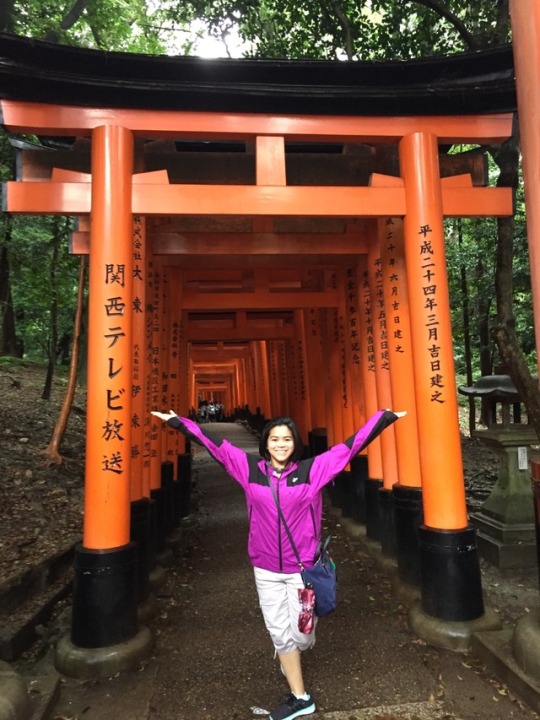
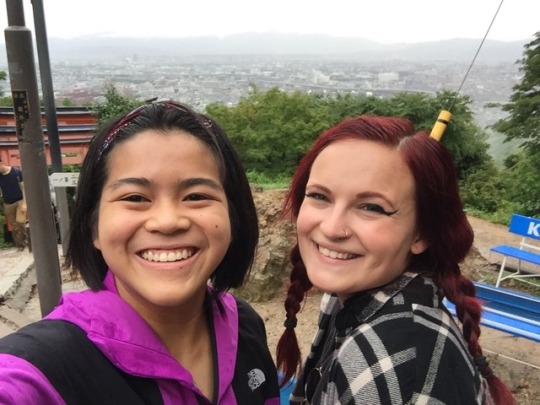
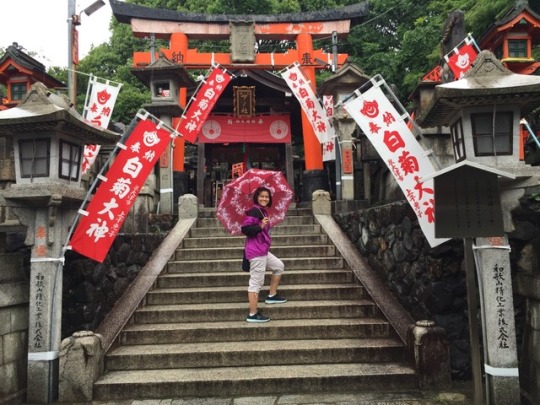
It does not matter how slowly you go as long as you do not stop.
~Confucius
Evening of the 7th day, June 7, 2018.
This is a very fast paced trip. We are going from one location to another at breakneck speed (literally on the Shinkansen). We get overwhelmed by the sheer amount of things that happen, we disappoint ourselves when we can’t do it all. It’s a dangerous line between being fascinated by everything to becoming closed off and distant due to the stress on our bodies.
It has been 7 full days since we’ve been on this trip. It can feel redundant to see another shrine, more souvenirs exclusive to an area, and more train rides. But the Fushimi Inari shrine was one of my favorite locations so far. Many of us stopped at the crossroads that split the Inari gates. Some of us decided to return to the food stalls and shops. Some of us decided to continue moving forward.
Kelley and I moved forward. Slowly but surely reaching toward the top. We talked a lot about the trip and how one day we would return to Japan. We took our time for pictures and the scenic views and the sheer beauty of the shrines.
There is nothing like this. It was an experience that I will forever hold close. I’m so glad I decided to keep moving forward. We had multiple chances to stop and return, but we made the decision to continue. And it was all the better for it.
This trip will end, but I need to keep moving forward. I have many decisions to make in my life, including where I will work and moving forward in my studies. There’s also the NCLEX to worry about. Hopefully the post trip depression won’t hit me so hard that it stops me. I’ll think of this hike and remember to keep moving forward.
Photos taken on June 7, 2018 at the Fushimi Inari Shrine.
0 notes
Video
youtube
Dogen further illustrates my point.
0 notes
Photo

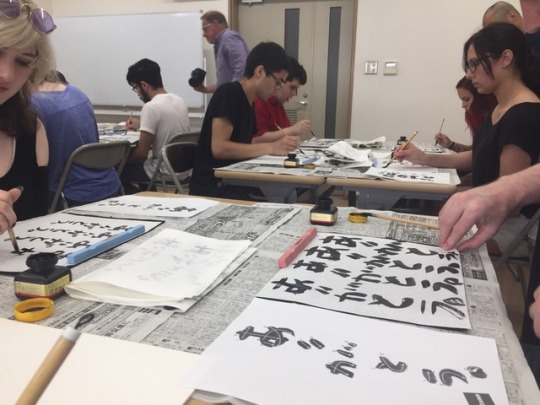
I think that the Japanese culture is one of the very few cultures left that is its own entity. They’re just so traditional and so specific in their ways. It’s kind of untouched, it’s not Americanized.
~Toni Collette
Many things have been left untouched on this island that was closed off for thousands of years. Taiko drums and calligraphy are ancient pratices that live on today in the people of Japan. There is a rich history behind each art form, and distinct skills that are honed by each person. There are many parts of Japan that are left untouched by globalization, keeping a unique Japanese culture after thousands of years of isolation. It is only within the last century that Japan has opened its doors to globalization. This quote is mostly true, but the winds are beginning to change.
Temples and shrines are basically left untouched, preserved, or maintained. They stand where they always stood or were rebuilt to honor the original.
Taiko drums use choreography and unique rhythms that have been carried on through the centuries. Samurai stances and specific female cow skins for the drums continue to be taught and crafted. The drums continue to be modernized in a unique way in the form of arcade games.
The art of calligraphy continues as it once was centuries ago. Calligraphy shows off talent and character of each individual.
There are thousands of kanji characters that have strong meaning attached to them.
But the Japanese language has been changing within the last couple decades. An ancient language has started to use loan words by using katakana. When I see katakana words or the super global campaign to include more loan words in the Japanese language, I see a country opening up to the world by also losing a part of itself. Traditional Japanese words are being replaced by English sounding words written in a Japanese way. Simple words like toilet or ring are changed from their original Japanese words to the katakana in modern conversations. It’s correct because it is Japanese, but its origins are no longer Japanese. Needless to say, they’re becoming Americanized.
Photos taken on June 6, 2018, of our Taiko drum and calligraphy classes.
0 notes
Video
youtube
This is a video about Yami Kawaii, a fashion style that speaks from the heart of Harajuku.
0 notes
Photo
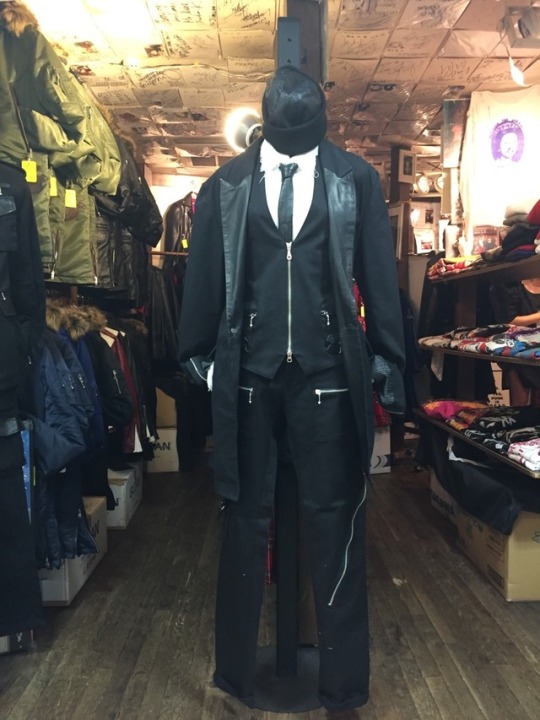

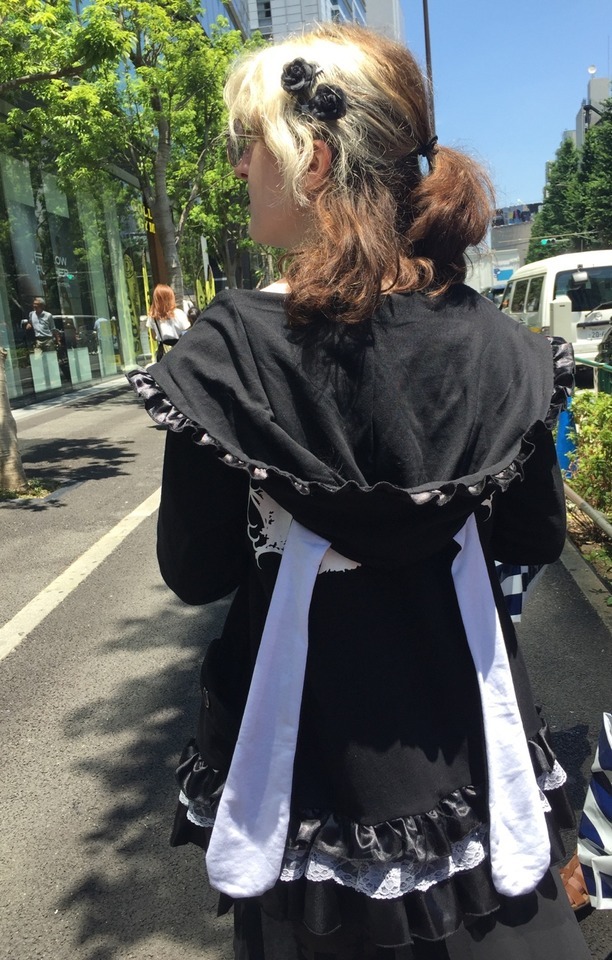


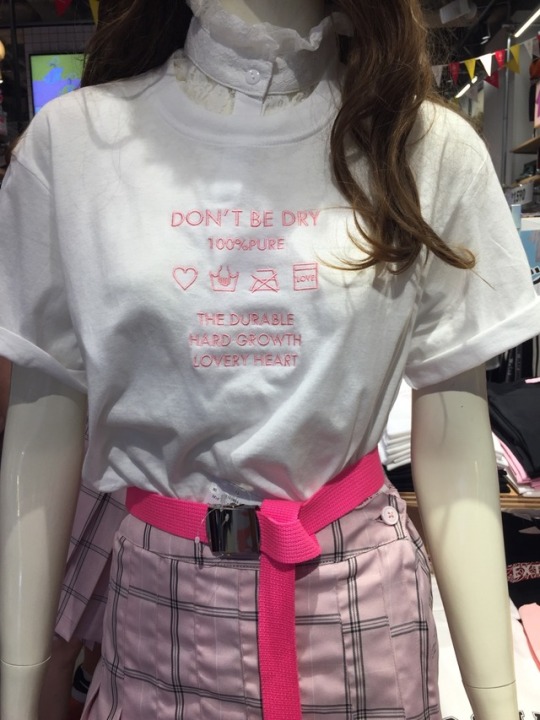
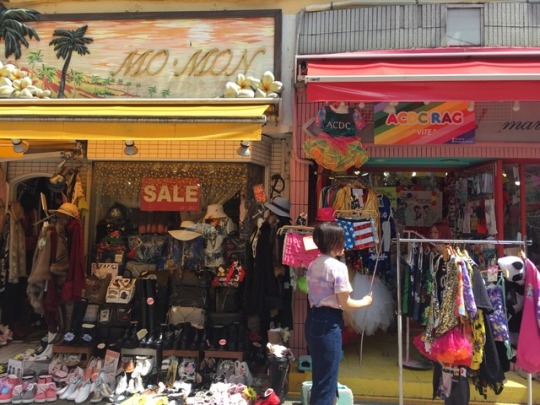

It’s hard to be an individual in Japan.
~Haruki Murakami
In a society that is made of rules and constraints, it can be difficult to go against the grain, to be that individual. The nail that sticks up gets hammered down. Schools make their students wear uniforms and business offices have very standard wear, but there are individual items to make people stand out from the choices of their phone cases to ticket pass holders. People try to individualize themselves, and there are places of individuality.
Harajuku wants to be the answer to that statement. Fashion and standing out are the heart of Harajuku. Punk rock, kawaii, gothic, or Lolita make the physical body of Harajuku. There’s an individual style for anyone. Harajuku fashion is a way to express yourself and find a space where others share similar interests. Kawaii culture emphasizes finding what you love and making it your own. Decora is famous for its mantra of doing whatever you want. Put on those thousands of bows and clips, do what makes you happy.
Communities exist in many shapes and forms in Harajuku. They make it easier to be yourself among others who are similar, rather than face a constrained world by yourself. Support and acceptance allow people to be individuals.
I partially agree with this quote. There are times when the culture dictates that they follow the rules and restraints, but people who want to be individuals can find ways to be one.
Photos taken on June 5, 2018, in Takeshita Dori. I found what makes me happy.
0 notes
Photo

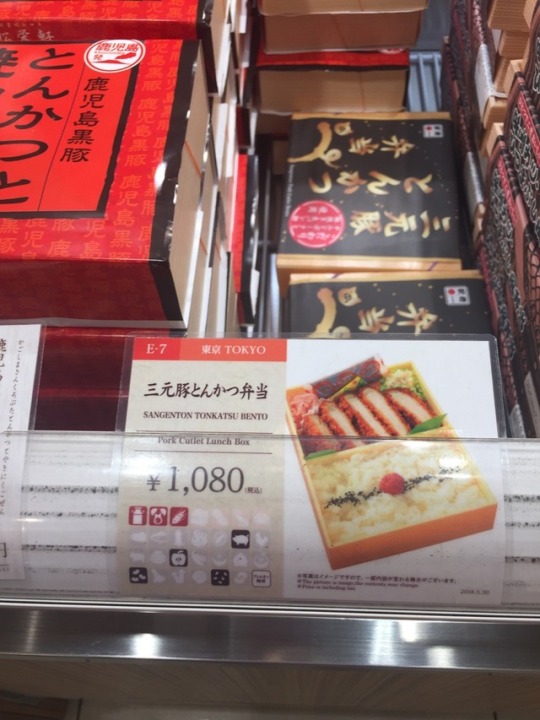
I’ve never really wanted to go to Japan - simply because I don’t like eating fish.
~Britney Spears
As someone who grew up in a Filipino family, I was surrounded by seafood and fish products. Right until my family fed me salmon (they didn’t believe the doctor when they told them I was allergic to all seafood and fish products) and discovered I was in fact allergic to all of it. Then there was an incident with a shrimp when I was 7 years old and my tongue burned and my throat felt itchy and uncomfortable.
Needless to say, fish and I have a very strained relationship. And yet here I am in Japan where fish is a staple and national treasure. Some people are surprised by my being allergic to fish and worry that I’m missing out. They’re right. I can’t eat certain foods that have fish sauce. But I do anyway, and my lips become irritatingly inflamed with pruritis and my face swells a little, but the food is so good. I ate shrimp chips by the bag as a child and ignored the scratchy feeling in my throat. I miss out on an elaborate dinner on a night cruise as I wait for the fried vegetables to arrive on the plate.
Ayaka-sensei told me that the ship didn’t have any other options. It was a very traditional boat ride that didn’t think of people who have allergies or special eating conditions. I asked Ayaka-sensei if there were less people with allergies in Japan. She said there was about the same, but people in Japan are not as loud about it as people in America. Americans made it known that there are people with allergies that we should accommodate for by placing allergy warnings on food labels. In Japan, they are much more quiet about their allergies and conditions and look out for themselves.
It’s ok. This is my truth. I can live with it. I can’t have fish and seafood, and I never will or else face the consequences. But maybe some more awareness can be made to help others who have been fending by themselves. Some places can be allergy friendly, but they are far and few between in Japan. I know I love Canada for their peanut free factories and large peanut warnings. It makes my day when I know I don’t have to worry about dying from a peanut. Did I mention that I’m allergic to all tree nuts, peanuts, and hazelnut? A little warning would be appreciated.
This links to an article that discusses the current state of allergy awareness and how to survive with an allergy while in Japan: https://www.japantimes.co.jp/community/2017/03/05/how-tos/whats-visitor-food-allergy-japan/#.WyyN3ispCEe
The first picture was taken on June 3, 2018. It was our sushi dinner from the night cruise around Odaiba bay. The second picture was taken on June 6, 2018. We purchased bento boxes from the Tokyo station before taking the Shinakensen to Kyoto. The store had picture labels of food items and even colored allergy warnings in red. This was the first time that I’d seen warning labels shown like this. I didn’t need Ayaka-sensei to translate for me.
0 notes
Photo
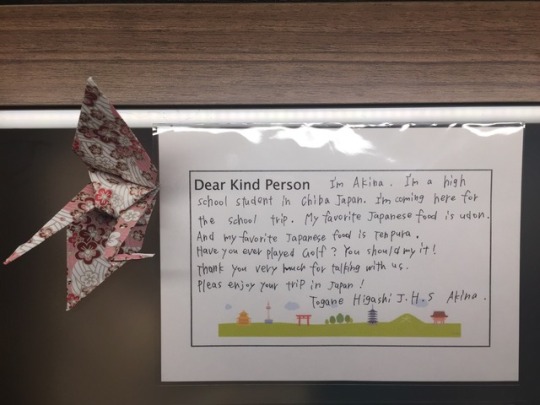

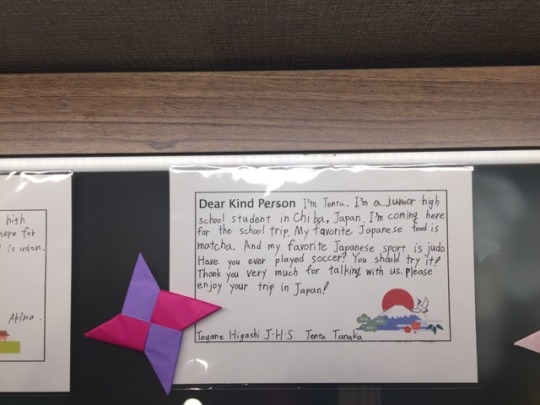

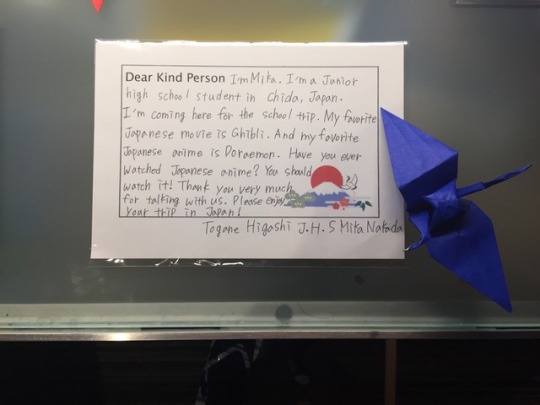

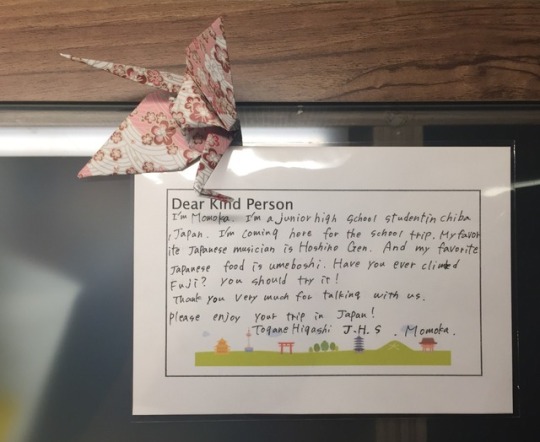
Notes given to us by students of Togane Higashi Junior High School
0 notes
Photo


In Japan, you have no idea what they are saying, and they can’t help you either. Nothing makes any sense. They’re very polite, but you feel like a joke is being played on you the entire time you’re there.
~Bill Murray
What is it like to not know a language or custom and trying to communicate and share information? It’s like this. You’re facing the cashier, and you’re trying to remember phrases that you learned in a crash course to Japan and the Japanese person in question is trying their best to understand what you’re saying so that they can help you with your order. Eventually you both resort to pointing at pictures and nodding heads in agreement. It’s just as uncomfortable for them as it is for us.
I had one of my longest interactions with a shop clerk at kamakura. She liked to point things out in the store calling them “kawaii”, and I responded in kind. It was really fun. I was able to ask questions like “kore wa ikura deska” or “Sashin wo totte mou ie deska” (Can I take a picture?). And they responded very clearly and with body language (👌). We did our best to communicate with one another and were able to make the best of it. We had fun communicating with one another.
One of the shop clerks from the kimono fitting tried to talk to us too. She asked us “where from”, until we could understand her. We started with America, but then tried our best to explain exactly where in America. She wanted to interact with us and tried her best with the language skills that she had.
Some of the best interactions are with Japanese students practicing their English skills. They come up to us, and say hello, then read questions from their homework pamphlets. We listen and answer until we communicated that “my favorite Japanese band is Sekai no Owari” and then their faces light up because 1) they know that band too 2) they asked correctly and 3) they got a response they understood. They’ll wish we enjoy our trip in Japan, and we all go back to our teachers/professors and tell them about our experiences.
Communication is a two way street. They want to be able to communicate with us as much as we want to communicate with them. Bill Murray makes it seem like a joke or that they are mocking us. I’m here to say that it’s for ease and better understanding. It’s when we get frustrated and feel unable to communicate that feelings of distraught at the other person may arise. We have to keep our feelings in check. It’s not anyone’s fault that we’re not able to completely understand one another, but we have to make the effort to try.
The first photo was taken on June 6th, 2018. After descending from the Fushimi Inari Shrine, Kelley’s bright red hair attracted the students who asked us questions for their English homework. The second photo was taken on June 9, 2018 when students asked us for photos.
0 notes
Photo
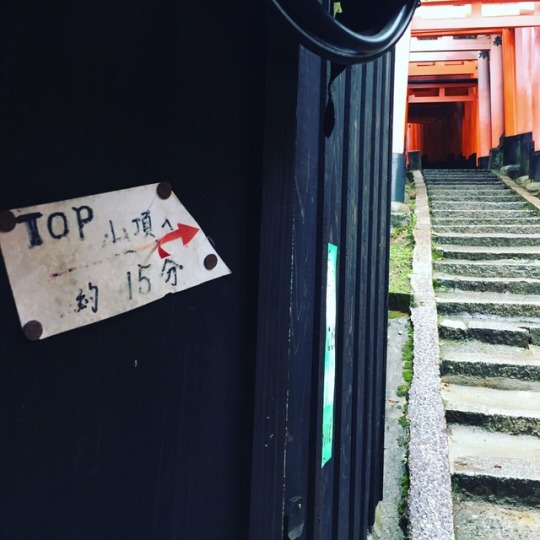
There are no short cuts to any place worth going.
~Beverley Sills
Evening of the 2nd day, June 2, 2018.
It took me about 4 years to finally go on this trip, after watching all of my friends go over the years. It’s finally my turn. Sometimes I’m not even aware that I’m here, almost like it isn’t real. Then I feel moments where it’s all too real, and I’m in a foreign country where I can’t even vaguely understand the language. I (somewhat) know 3 languages (English included). The rules are sometimes hard to remember, and I forget them so easily in the actual moment.
It has been overwhelming. I want to make the most of it, but there are no shortcuts to a foreign country. I’ll fumble my way through communicating a restaurant order. I’ll feel sensory overload from trying to feel and experience everything in such a short amount of time (3 hours was NOT enough time to explore sunshine city). I’ll forget the rules of the train everytime and get reprimanded for it. I’d say I’m a pretty quiet person (I was voted quietest person in my high school class). But out here, I’m a loud foreigner.
It’s taken time to adjust. It feels like it’s been forever, but not enough. And the trip has barely begun. I can understand the feeling of wanting to come back to Japan, the feeling of “I’ll do it better next time” or “I’ll try this next time”. But for now, I’ll do my best. Ganba!
Picture taken on June 7th, 2018, on my way to the top of the hill of the Fushimi Inari Shrine in Kyoto, Japan.
1 note
·
View note
Photo
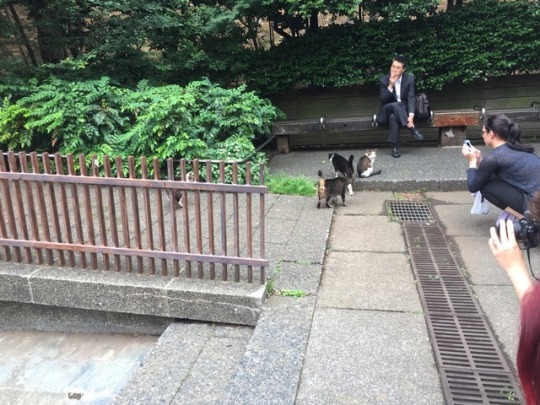




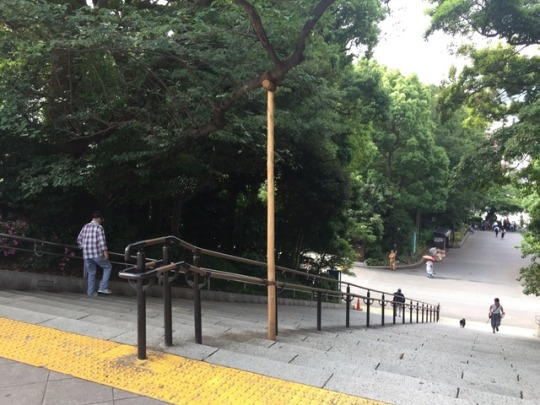
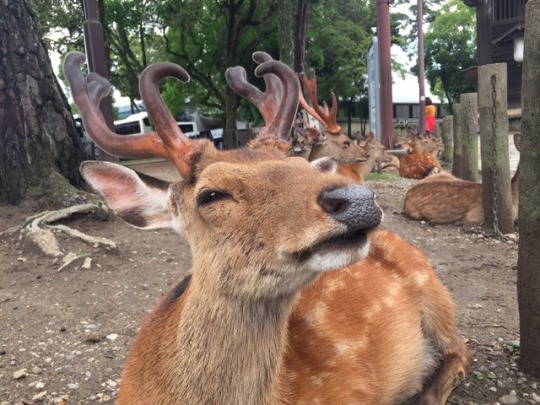
Japan, not only a mega-busy city that thrives on electronics and efficiency, actually has an almost sacred appreciation for nature.
~Apolo Ohno
0 notes
Video
Japan, not only a mega-busy city that thrives on electronics and efficiency, actually has an almost sacred appreciation for nature.
~Apolo Ohno
Japan is the land of contrast, not contradiction. There’s a harmony between nature and city. It’s seen in how Japan maintains and interacts with nature within its city. The streets are cleaned and respected while nature thrives among them.
On my first day full day in Japan, we walked out of our hostel in the early morning with business people on their busy way. There were workers and cars rushing through the streets and traffic. The hustle and bustle became louder the closer to the highway we went.
Then suddenly among the modern architecture was a wooden gate with a traditional Japanese temple. Walking through the gates entered a quiet alcove with statues that were well maintained and a cemetery where gravestones are traditionally washed. It felt like a different world from the busy life outside. A place to stop and contemplate the importance of this space to their culture and people. The Jizo statues had new cloths and knitted hats placed on them, the ginkgo tree looked ancient and well kept, and the gravestones aligned with stupa/sotōba. This place sits peacefully in the midst of the city.
Throughout my whole stay in Japan, I continued to see the “sacred appreciation” that Apolo mentions. I would stumble upon their need to protect and respect nature. A tree branch would grow over a stairwell and a post would be made to support it rather than cutting it down. Nature doesn’t fight for space. They live among the people who work in an industrialized nation.
This video was taken on June 1, 2018. It is our first morning walk, and we visited a shrine that was underneath a busy highway.
0 notes